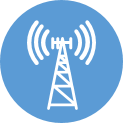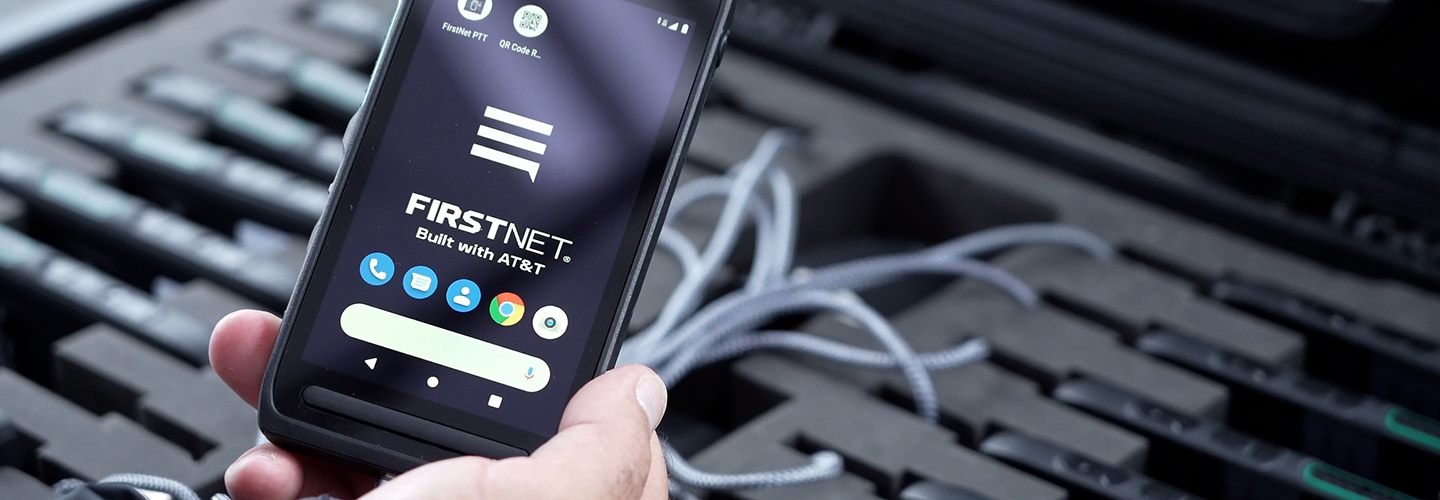The Network elements: LTE, Core, RAN, Devices and Apps

Long Term Evolution (LTE)
The law that established FirstNet specified that the network shall be based on the minimum technical requirements on the commercial standards for LTE service. LTE is the evolution of a proven technology, which is now in its fourth generation. With each generation comes improvement in speed and functionality.
Standards work to enhance and evolve 4G LTE is continuing on a global basis. The First Responder Network Authority is involved in the standards process and working closely with public safety organizations to support the development of standards and functionality that meet the needs of the public safety users that FirstNet will serve. The focus is on a suite of mission-critical capabilities for public safety, including mission-critical push-to-talk (MCPTT), proximity services, mission-critical data and mission-critical data.
FirstNet broadly defines its LTE network in distinct layers: Core Network, Transport Backhaul, Radio Access Network (RAN) and Public Safety Devices.

The FirstNet Core
FirstNet has an enhanced packet core network, a key component for ensuring that users have a single interoperable platform nationwide. The secure, redundant core network has key primary functions: it switches data, processes and reformats information, stores and maintains data and keeps it secure. Applications and services and operational and business support systems also reside in the core network. The core will interface with other state, local and federal networks, including 911 and the Internet. Essentially, the core serves as a giant umbrella covering all of the United States including the territories and the District of Columbia. The core is connected to RANs in each state via the backhaul layer of the network.

Transport Backhaul
These are the links that carry user traffic, such as voice, data and video, and signaling from the radio base stations to the core network.

Radio Access Network (RAN)
The RAN portion of the network consists of the radio base station infrastructure that connects to user devices. RAN includes cell towers as well as mobile hotspots embedded in vehicles that backhaul to the core network over satellite or other types of wireless infrastructure.
Comprehensive RAN planning is required to optimize coverage, capacity and performance for a nationwide network. Modeling has shown that tens of thousands of radio base stations are needed to cover at least 99 percent of the population and the national highway system. Population coverage alone won’t suffice for public safety. State by state, and territory by territory, FirstNet has worked to understand public safety coverage needs. Through the State Plans process, the First Responder Network Authority and AT&T worked with each state and territory to understand unique needs and build a plan for each state and territory that best meets those needs. Each U.S. state and territory – 56 in all – adopted those plans, “opting in” to the FirstNet network.

RAN Reliability
The very circumstances that can require first responders to come to the aid of others can also wreak havoc on RAN sites when first responders need coverage the most. Making a system reliable – one that public safety can trust – requires physical and operational redundancy and hardening. The FirstNet network was designed to be and will be monitored to provide high availability to public safety.

Public Safety Devices and Accessories
Everything from smartphones to tablets, In-vehicle routers (IVR), and a wide variety of specialty devices will be developed for FirstNet users. The goal is to create choices for public safety that provide a range of needed devices that are accessible, affordable and convenient.
With the potential for millions of users, FirstNet has the scale and leverage to drive development and procurement of devices and accessories at the best possible prices. Scale can also spur interest from a number of new vendors, which can enhance vendor/design variety, increase competition and help lower prices for public safety devices. The First Responder Network Authority and AT&T are working with industry to develop device types and applications to meet public safety use cases identified by public safety users. FirstNet devices and applications undergo a variety of testing and certification in areas including interference, operation, environmental factors and security. You can read more about the FirstNet device ecosystem on the FirstNet products and services site, FirstNet.com.

Public Safety Applications
FirstNet supports public safety applications and key mission-critical network services that have the potential to transform how first responders and the public safety community do their vital work. The FirstNet applications strategy is to enable creation of new public safety applications while maintaining support for existing commercial applications to establish a portfolio of resilient, reliable, secure and easy-to-use applications for first responders. The FirstNet Application Ecosystem provides a strong app development program, with tools and resources for testing, review and distribution of public safety applications, as well a FirstNet App Catalog available to FirstNet subscribers today with tested and reliable public-safety apps.
LEARN MORE
- Read about public safety organizations that have adopted FirstNet – FirstNet in Action
- Learn about FirstNet products and services and how public safety can join FirstNet – FirstNet.com

















